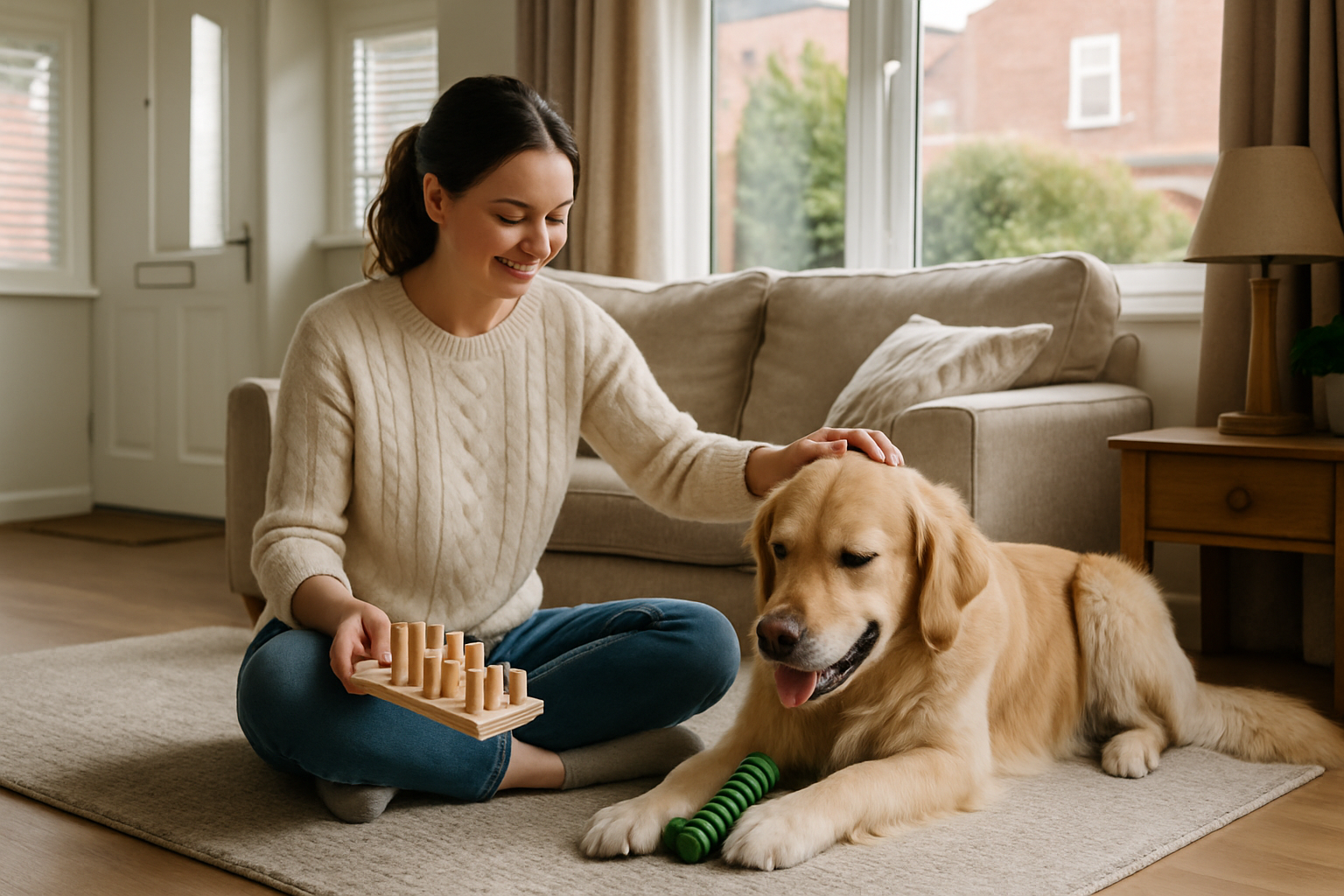Your basket is currently empty!

Happy Home, Essential Calm Dog Enrichment That Really Works
Calm dog enrichment can turn a fizzy, fretful walk into a relaxed, rewarding routine. At PawsGuide, we see every week how small, thoughtful activities help dogs switch from high alert to soft eyes and steady breathing. Rather than trying to tire your dog out with endless fetch, calm-focused games and setups give the brain just enough to do, without winding them up. Whether your pup is sensitive to the postie, overexcited by the bin lorry, or simply struggles to settle after a busy day, this gentle approach can make home life feel cosy again.
Why Calm Beats More Exercise
It is tempting to think more exercise equals a calmer dog. In truth, high-intensity play can crank up adrenaline, which takes a long time to leave the body. Dogs often look tired, then bounce back like a yoyo, ready to sprint again. Calm enrichment shifts the dial. By tapping into natural behaviours like sniffing, chewing and licking, we allow the nervous system to downshift. Sniffing is especially powerful. Ten minutes of methodical scent work can be more settling than a long, fast run. You will notice softer movement, fewer startles at street noises and a dog that chooses to rest on their own.
Simple At-Home Ideas
Start with scent. Scatter a handful of your dog’s kibble over a towel or short grass in the garden and let them forage. Swap the towel for a snuffle mat when it is wet outside. Chew time is another winner. A safe chew or a stuffed Kong can act like a canine stress ball. Licking is soothing too, so try a LickiMat with a thin spread of wet food or mashed banana. Keep sessions short and calm, then invite a settle on a cosy bed with a chew or a simple food toy.
If your dog is nervous about delivery drivers, set up a cardboard box treasure hunt in a quiet room at the usual delivery time. Hide a few treats under scrunched paper and let them search at their own pace. You can also do scent swaps. Place a worn sock of yours in their bed for comfort, or rotate toys so novelty stays gentle, not overwhelming. Keep the TV low, pop the kettle on, and enjoy the peace while your dog potters with purpose.
Gentle Walks, Happier Dogs
Try a decompression walk. Pick a quiet time and place, clip a long line to a well-fitted harness, and let your dog sniff, meander and choose the route within reason. Pause often. If your dog locks onto a noise, scatter a few treats in grass and let sniffing re-focus their brain. Swap ball-chucking for slow mooches along hedgerows and leafy verges. On drizzly days, a 15-minute sniffari around your block can beat a frantic sprint in the park. You are building emotional fitness, not chasing steps on a tracker.
A Real-Life Routine You Can Keep
Here is a simple weekly plan to keep things steady. On four days, do a calm sniff walk, then home to a short lick or chew session. On two days, swap the walk for indoor scent games if the weather or your dog’s mood says no thanks. Reserve one day for a slightly longer countryside mooch if you can. Keep training tiny and kind. One or two minutes of hand-targets or nose-to-mat between calm activities is plenty. Most importantly, end on success. A small win followed by a settle makes tomorrow easier.
Keep it flexible. Dogs have off days, just like us. If your pup struggles, reduce the difficulty. Fewer treats in the snuffle mat, a smaller area to search, a quieter street. The goal of calm dog enrichment is not perfection, it is confidence. Over time, you should see quicker recoveries from startles, easier naps, and a dog that pads to bed after tea rather than pacing the hallway.
When To Call In Help
If your dog growls when approached at rest, panics at everyday sounds, or cannot settle even after gentle routines, speak to your vet to rule out pain, then work with a qualified behaviour professional. You are not failing. Some dogs simply need a tailored plan and a bit of teamwork.
If you need extra support or additional resources, visit our ‘Useful Links’ page for further guidance.
